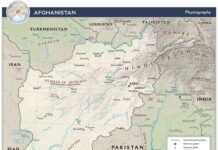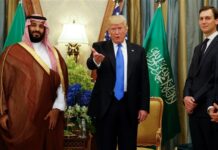Context

Last month’s whirlwind visit to Australia by US President Barack Obama brought with it some important news for the Asia Pacific region. The US is shifting its focus back to the Asia Pacific region, after more than a decade of intense involvement in the Middle East. Australian Prime Minister Julia Gillard oversaw the agreement to allow an increased US troop presence in Australia. The accord sent a signal to the region, most notably China that Australia is prepared to take a central role behind US interests in the Asia Pacific. In addition, the decision by Australia to sell uranium to India would complicating its relation with Pakistan.
Analysis
US-China Relations And Australia
Australia is considered a middle power in the pacific region and is a long-time, steadfast US ally. The country has maintained its friendship with the US throughout the years, backing and joining it on many occasions, despite domestic controversy. This was especially true in regards to the deployment of Australian troops in Afghanistan.
During the Prime-Ministership of John Howard (1996 to 2007) Australia’s relationship with the US became increasingly close. After the attacks of September 11, 2001, and ignoring an outpouring of public opposition, Mr. Howard sent Australian soldiers into the US-led war in Afghanistan under the ANZUS Treaty, made in World War II. While the number of troops was quite small, the message was clear: Australia would stand by its ‘great friend’ despite domestic and even international condemnation of the war in Afghanistan.
The presence of Australian troops in Afghanistan remained a bone of contention for the rest of Mr. Howard’s tenure as Prime Minister, however the payoff was to solidify the alliance with the US.
The issue of China for Australia has always been a balancing act. On the one hand, China is a huge export market for Australian coal and mineral resources, and a large supplier of cheap imports as well. However, Australia also understands the ‘kid glove’ relationship between the US and China, in which Australia places herself in the US camp. So while a good relationship with China is important, it will not derail the special relationship Australia has with the US.
When Mr. Howard’s successor, Labour Leader Kevin Rudd was voted into government in 2007 a question mark was raised over how Australia’s relationship with China would progress. It was thought that Mr. Rudd, who speaks Mandarin and was perceived as having more of a bent toward China than the US, was intending to steer Australia in the direction of China.
Mr. Rudd, however, was not the champion of China some had thought he may be. Beijing was wary of Mr. Rudd from the onset as his university studies, while being all about China, had focused on Chinese dissidents, and during his time as a Diplomat in Beijing he had actively sought out dissidents. Mr. Rudd’s proposition for the formation of a Pacific Community, along the lines of the EU, was also seen as a tacit way of curbing China’s unilateral rise in the region.
Subsequent Wikileaks documents have confirmed that Mr. Rudd was not the ‘sinophile’ he was thought to be and indeed had warned the US they must be prepared even for military action against China.
With Mr. Rudd’s deposal in June of 2010, his successor Julia Gillard has clung to the US-centric trajectory set up by her predecessors. Ms. Gillard last month upped the ante in the US-Australia relationship, by consenting to the deployment of US troops to Australian soil during a fly-by visit of US President Barack Obama. Beginning in 2012, US troops will use the large Bradshaw military base in the north of Australia for joint training exercises and maintain a permanent presence there.
The announcement coincides with a sharp shift in US focus toward the Asia Pacific region. While in Australia, President Obama was not shy to announce that he is reenergizing US efforts in the region. Australia has clearly been singled out in this regard as the US’s special ally in the Pacific. The spotlight on the Asia Pacific has in some respects illuminated the US-China dynamic.
Australia-India Dimension
The US containment policy toward China is well underway, with US presence in neighboring Japan and Afghanistan, a US-friendly India and now the promise of increased US presence in the South Pacific based out of Australia. Whether they have been yet or not, every country in the region will at some point be asked to choose between the US and China and it is very likely that there will be no ‘Switzerland’s’ allowed.
The US choice of befriending India to counter Chinese dominance has also had ramifications for deteriorating US-Pakistan relations, especially since China and Pakistan have fostered a strong friendship for decades. In this regard Australia’s position regarding both China and Pakistan has deteriorated this week since the decision to lift an embargo on exporting Australian uranium to India was announced.
Australian policy has long been that the sale of uranium to states that are not signatories of the Nuclear Non-Proliferation Treaty is not allowed, however the government decided that India was so closely monitored by the international community that selling uranium to them would be safe. Pakistan, also a non-signatory to the NPT, has claimed that this treatment is unfair and that Pakistan should also be able to purchase Australian uranium. Moreover, India being in ready supply of uranium has the Pakistani military establishment concerned and this will clearly place a dent in Australia-Pakistan relations.
While not a stellar rise, Australia has nevertheless become increasingly important in the Asia Pacific. This has, of course, been intimately linked to the Australia-US alliance and if Australia continues to be the reliable, willing ally it has in the past, its position in the region may increase further as the US attempts to make more of a stamp there.



